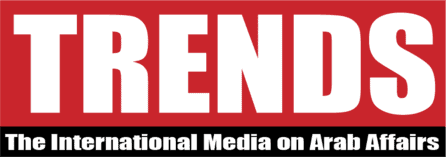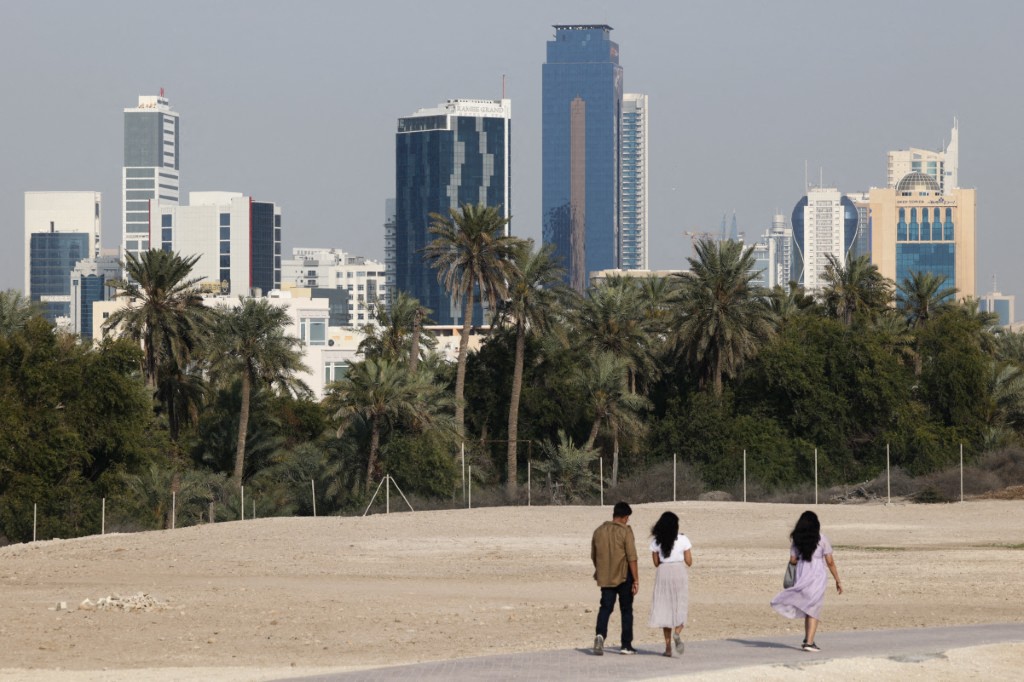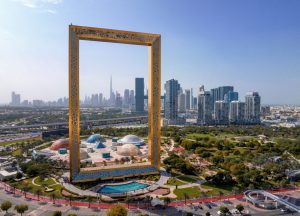Smaller than the smallest US state of Rhode Island, Bahrain is the smallest member country among the GCC nations – in size and in population – and yet classified as the high-income economy is the result of the future-ready policies of the tiny nation’s leadership.
While Bahrain’s nominal GDP per capita estimate for 2025 is US$30,035 according to IMF, the per capita projection for gross national income (GNI, PPP) per capita stands at US$69,271. To clarify, nominal GDP per capita uses the official exchange rate to ascertain average income and the purchasing power parity or PPP considers the local cost of living and purchasing power of the local currency as opposed to the US dollar in the United States.
When the oil-rich countries in the Arabian Gulf were beginning to reap the benefits of crude oil exports in 1970s and 1980s, Bahrain launched and aggressively carried the economic diversification efforts. Resultingly, the contribution of the non-oil sector toward Bahrain’s GDP has been rising over the decades reaching 85 percent in 2024 and 2025 (estimated).
An academic thesis titled: “The Future of Bahrain as a Financial Center”, published in 1994 by Sloan School of Management at the Massachusetts Institute of Technology, traces Bahrain’s economic transition. It stated that recognizing the limited petroleum reserves, the country’s government initiated economic diversification efforts way back in the 1970s.
“…the diversification plan was aimed at developing Bahrain as an offshore financial center… the country experienced high rates of real economic growth. Despite rising import levels, the external current account and the overall external position experienced large surpluses, and foreign reserves accumulated.
“These trends were maintained through the early 1980s, despite the regional Iraq-Iran conflict, due to continued strong world oil prices and an increase in petroleum exports attributable to Bahrain receiving a half share of the offshore Abu Saafa oil field operated by Saudi Arabia,” states the thesis.
By the mid-1980’s, Bahrain had achieved rapid progress in diversifying economic activity. Oil refining, aluminum and several ancillary industries were set up, offshore banking flourished, and tourism was active, it said.
As part of structural reforms, Bahrain introduced 100 per cent foreign ownership of businesses in 1991– the first such move in the region. Another tactical move was to privatize or reduce state ownership of joint-venture enterprises in the country.
When Bahrain invited international banks to establish regional offices in 1975, it allowed banks to accept payment and receipt of interest and allowed widely accepted code of banking conduct. This was a turning point for the Bahrain’s financial sector as the banking sector in other Gulf countries used to operate under Shariah principles. In 1977, Bahrain also opened its arms to investment banking after the geographic location helped it attract international banks such as Bank of America and other big names.
Bahrain’s GMT +3 time zone made the location unique owing to the highest overlapping market time among the major financial centers in the world – Tokyo, London, Frankfurt, and New York among others, stated the thesis, adding that this helped banks and customers to a variety of investment and trading opportunities and help distribute risk in different markets and instruments.
“Being close to the major oil producing countries, who are sitting on large sums of wealth, lack the domestic or the regional investment opportunities, and heavily spending on development of their economies, Bahrain is ideally positioned to provide banking and other services required and act as a link between the Gulf states and the rest of the world,” said the academic paper from 1994. In addition, the collapse of the Lebanese banking industry after the breakout of civil war in 1975 helped Bahrain offer an alternative and stable financial services destination in the Arab world.
In the post-digital world, Bahrain’s center of activity, the city of Manama, has stiff yet healthy competition from the GCC financial centers such as Dubai, Riyadh and Doha. However, one must acknowledge that when it comes to reforms and financial services Bahrain has been the pioneer in the region.
Today, Bahrain is reinventing its economy through focusing heavily on Fintech Innovation, developing data centers with partners such as Amazon Web Services. Interestingly, the nation of less than two million people has now become one of the leaders in Islamic finance – the pioneer of conventional banking in the region in 1970s has been robustly supporting Shariah-compliant financial instruments amid the Fourth Industrial Revolution.
In terms of economy, a communique from the Ministry of Finance and Economy released in October 2025 states that non-oil activities contributed 85.2 percent to real GDP in Q2 2025, with non-oil activity growing 3.5 percent YoY and total foreign direct investment stock increased by 5.4 percent YoY to reach a total of US$46.4 billion.
The ministry’s statement said: “Professional, scientific, and technical activities recorded the highest growth at 12 percent in Q2 2025, followed by wholesale and retail trade (6.7 percent), and real estate activities (4.7 percent). Accommodation and food services rose 4.6 percent, information and communication 3.6 percent, construction 2.7 percent, financial and insurance 2.4 percent, and manufacturing one percent.”
Highlighting Bahrain’s position, Minister of Finance and Economy Shaikh Salman bin Khalifa Al Khalifa said from finance and logistics to manufacturing, tourism, and the digital economy, Bahrain offers one of the region’s most agile and welcoming business environments. Yet our greatest strength lies not only in our location or our laws but most importantly in our people: talented, ambitious, and eager to shape the future.
In his opening address of this year’s two-day Gulf Gateway Forum on November 2, Shaikh Salman spoke about the key deals saying: “Over the next two days, across 61 announcements and 33 signing ceremonies, we will be announcing projects worth 17 billion dollars.”
At the same forum, Abdulla bin Adel Fakhro, minister of industry and commerce, announced a package of new initiatives aimed at enhancing Bahrain’s investment environment.
The industry minister highlighted 12 industrial investment opportunities developed in partnership with the private sector, designed to substitute imports worth up to US$2 billion and generate over 3,000 local procurement opportunities across several sector in partnership through Bahrain Economic Development Board, and Mumtalakat Holding Company, Bahrain’s sovereign wealth fund.
The minister stressed on incentives allowing duty-free access to Bahrain-made products across GCC markets that offer preferential treatment in government procurement, in addition to access to over four billion consumers worldwide through Bahrain’s network of free trade agreements. “Bahrain actively participates in the GCC’s unified negotiating team to conclude more than 10 new free trade agreements, further boosting the competitiveness of national exports,” he said at the Gateway Forum.
Amid the positivity, one of the major concerns for the Bahraini economists is the country’s rising public debt. Per the official government budget figures, the government revenues have been less than the government expenditure resulting in a budget deficit. For the year 2025 budget, the deficit stands at US$3.86 billion and for 2026 there is slight improvement, but deficit is still there at US$2.86 billion.
International economic data suggests that Bahrain’s public debt to GDP ratio is projected to be approximately 131 percent in 2025, with some sources estimating it to be around 141 percent or 143 percent for the same year. This high ratio is attributed to factors like the decline in oil prices, increased security spending, and public investments for economic diversification.
Public debt has been a pain for Bahraini economy for almost a decade. The collapse of international oil prices and increased defense spending has not helped either. Few years back, Bahrain’s GCC neighbors came up with a US$10 billion help to tame the rising deficit. Besides the introduction new taxes, Bahrain might have to take tough measures to cut expenditures and increase its revenues.
Now, debt-to-GDP ratio may sound like a huge issue, and yes, it is. Japan has the highest ratio of 230 percent in 2025 followed by Singapore (176 percent) and Greece (147 percent) – exceptions are war-torn nations. If the other economic fundamentals are strong and if there is a political stability, high debt-to-GDP ratio is not a barrier in raising funds from international lenders.
Bahrain should continue to work closely with its Arabian Gulf neighbors to tame in the debt and deficit, and focus on Vision 2030 using to new tech and its unique location boost revenues and gain surpluses.
(The author is a senior journalist based in Toronto, Canada)







